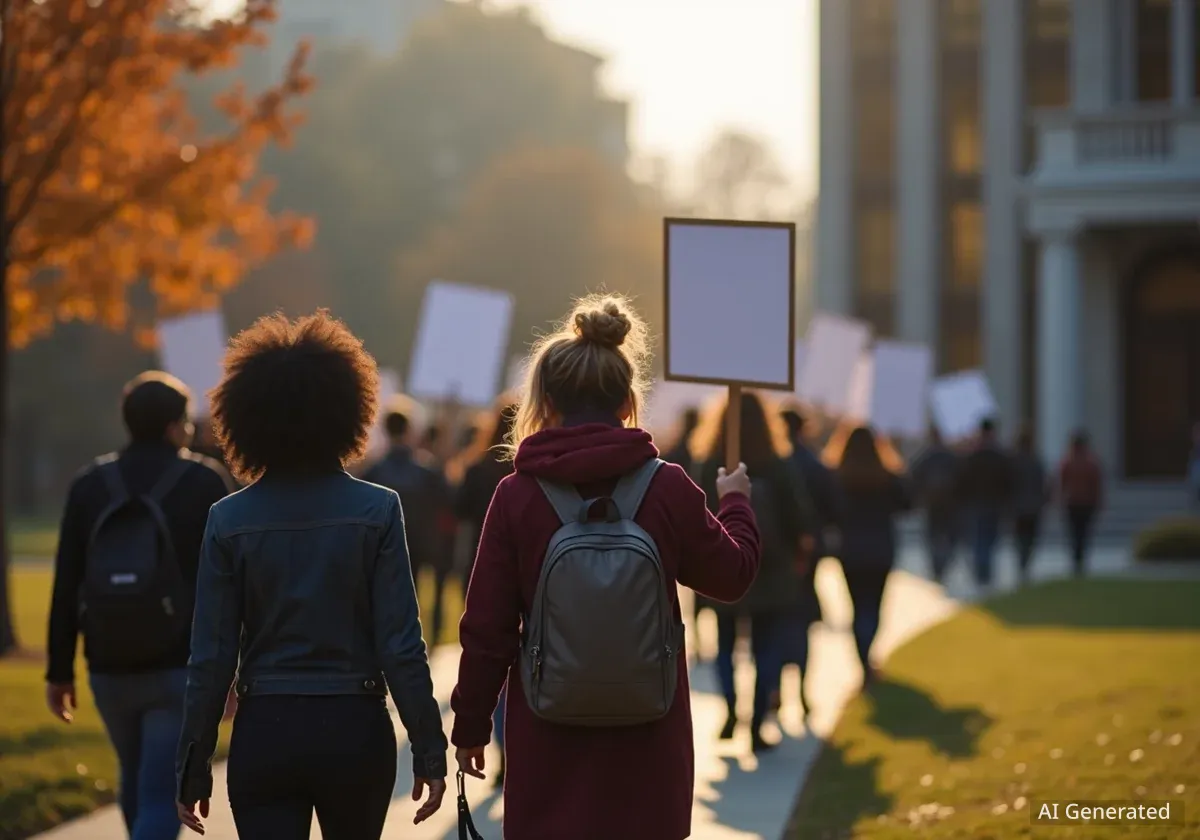A kindergarten teacher at Sunset Ridge Elementary School in Overland Park, Barb Hart, was recently dismissed by the Blue Valley Board of Education. The dismissal, which occurred at the end of September, stems from a violation of the district's Emergency Services Intervention policy regarding the physical restraint of students. This decision has sparked significant community backlash, with numerous parents and students publicly supporting the veteran educator.
Key Takeaways
- Barb Hart, a kindergarten teacher, was fired by the Blue Valley Board of Education.
- The dismissal was for violating the district's "physical restraint" policy.
- Parents and students have shown strong support for Ms. Hart, arguing against her termination.
- The incident reportedly involved picking up a distressed special education student.
- Community members are questioning the district's policy application and its impact on teachers.
Teacher Dismissal Sparks Community Debate
The Blue Valley Board of Education voted Monday night to terminate Barb Hart. This decision came despite a large turnout of parents and students at the meeting, all expressing support for the former Sunset Ridge kindergarten teacher. The community's response highlights a growing concern over the district's policies and their implementation.
Ms. Hart was dismissed from her position at Sunset Ridge Elementary School, located in Overland Park, Kansas, at the close of September. The specific reason cited for her termination was a violation of the school district's Emergency Services Intervention policy. This policy outlines strict guidelines for when "seclusion or physical restraint" may be used with students.
Incident Details
- Date of Incident: September 30
- Location: Sunset Ridge Elementary School, Overland Park
- Policy Violated: Emergency Services Intervention policy on "seclusion or physical restraint"
- Teacher Involved: Barb Hart, a longtime kindergarten teacher
Parents Detail Incident Leading to Dismissal
According to multiple parents who spoke to the Post, the incident occurred on September 30. They reported that a special education teacher requested Ms. Hart's assistance in the hallway with a student who was in distress. These parents stated their belief that Ms. Hart then physically picked up the student. She subsequently carried the student to a different location within the school.
The district's policy is designed to ensure student safety while also protecting staff. However, parents are questioning whether the policy was applied fairly in this particular situation. Many believe Ms. Hart's actions were an attempt to de-escalate a difficult situation involving a vulnerable student.
"Barb Hart is an amazing teacher who has dedicated years to our children," one parent commented. "Her actions were not malicious; they were an act of care for a child in need. The district needs to re-evaluate this decision." This sentiment was echoed by many others present at the board meeting.
Understanding the District's Intervention Policy
The Blue Valley School District's Emergency Services Intervention policy is a critical document. It provides clear procedures for staff to follow when a student's behavior poses a risk to themselves or others. The policy aims to prevent harm while minimizing the use of restrictive interventions.
Physical restraint, as defined by the policy, involves direct physical contact that restricts a student's movement. Seclusion refers to placing a student alone in a room or area from which they cannot exit. Both are considered serious interventions and are subject to strict regulations and reporting requirements.
Background on School Restraint Policies
School districts across the United States have varying policies on physical restraint and seclusion. These policies are often developed in response to state and federal guidelines, aiming to protect student rights and ensure staff safety. The use of such interventions is typically reserved for emergency situations where a student's behavior presents an immediate danger.
Educators often face challenging situations that require quick decision-making. The balance between maintaining safety and adhering to strict policy guidelines can be difficult. This case highlights the complexities involved in applying these policies in real-world school environments.
Community Rallies in Support of Ms. Hart
The school board meeting on Monday night saw a significant display of community solidarity. Dozens of parents, current students, and even former students attended to voice their support for Ms. Hart. Many shared personal anecdotes about her positive impact on their children's lives and her dedication to education.
Attendees wore shirts and carried signs advocating for her reinstatement. Their presence underscored the deep respect and affection the community holds for Ms. Hart. The outpouring of support suggests that many community members perceive her dismissal as unjust or an overreach of district policy.
Impact on Teacher Morale and Student Well-being
- The incident has raised questions about teacher autonomy in emergency situations.
- Concerns have been expressed regarding the interpretation of district policies.
- Some parents worry about the potential chilling effect on teachers who might hesitate to intervene out of fear of disciplinary action.
- The focus remains on ensuring both student safety and fair treatment for dedicated educators.
The Blue Valley School District has not released specific details about the incident or their decision, citing personnel privacy. However, the public nature of the board meeting and the strong community reaction indicate that this issue will continue to be a topic of discussion.
This situation brings to light the broader challenges faced by school districts in balancing safety protocols with the practical realities of classroom management and student support. The ongoing debate emphasizes the need for clear communication and transparent processes in such sensitive matters.
Moving forward, the community hopes for a resolution that addresses their concerns while upholding the integrity of the educational environment. The focus remains on what is best for both students and the dedicated educators who serve them.





